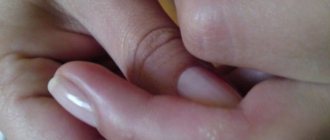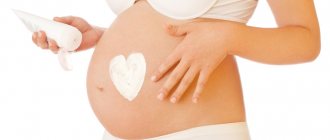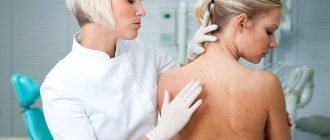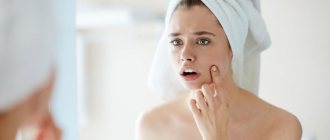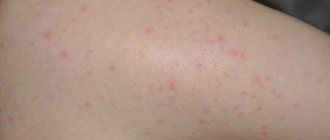External causes of acne on the back
External causes of subcutaneous acne on the back are associated with the influence of environmental factors. In particular, external causes of acne on the back include:
- use of inappropriate cosmetics;
- insufficient hygiene (rare washing) of the back;
- wearing synthetic and too tight clothing, which absorbs sweat and dirt.
External causes of back acne also include loose hair, the ends of which irritate the skin, causing excess sebum production. Sunbathing without protective equipment can also cause acne. After all, under the influence of sunlight, the stratum corneum of the epidermis thickens, which leads to the accumulation of sebum and clogging of pores.
Hormonal acne: what tests to take?
Acne treatment begins with a visit to a dermatologist and gynecologist, who will determine the possible causes of the disease through a comprehensive examination. The gynecologist prescribes smears for sexually transmitted pathologies (STDs and STIs), and inflammatory processes. A blood test for RW (syphilis) and HIV is mandatory. The dermatologist prescribes a whole range of specific tests of blood, urine, and skin.
Since women with acne are expected to have a disorder of the endocrine system, they need to undergo laboratory diagnostics to determine their hormonal status. The list of tests includes a mandatory test for the concentration of adrenal hormones. Paired glands located at the apex of the kidneys produce three groups of steroid hormones: mineralcorticoids, glucocorticoids, and sex hormones: androgens, estrogens, progesterone. The doctor prescribes a blood test for testosterone, dihydrotestosterone, progesterone, estradiol, FSH (follicle-stimulating hormone). It is also necessary to check the level of thyroid hormones: TSH, T3, T4. In addition, doctors prescribe general and biochemical blood and urine tests.
Internal causes of acne on the back
Internal causes of acne on the back are associated with the functioning of the body. Among the internal causes of rashes:
- allergy;
- genetic predisposition;
- diseases of the gastrointestinal tract;
- overweight;
- poor nutrition;
- stress;
- excessive sweating;
- endocrine disorders.
In addition, internal causes of acne on the back include hormonal changes in the body. Thus, hormonal acne on the back in adolescents is associated with age-related developmental characteristics.
Development of acne as a consequence of endocrine disorders
Acne after thirty mainly affects women. As a result of disruption of the endocrine system in the body, patients experience an increased amount of androgens, the so-called male sex hormones. This factor causes acne.
In addition to acne, women develop hyperandrogenism, which is manifested by seborrhea and hirsutism, that is, hair growth in places typical of men, male pattern baldness, and sometimes even a deepening of the voice. These disorders lead to so-called masculinization.
Hirsutism
The production of excessive androgens in women may be adrenal or ovarian. In the first case, hyperandrogenism is caused by congenital adrenal hyperplasia or the formation of hormonally active adrenal tumors that intensively produce hormones. This condition is quite rare.
Typically, hyperandrogenism is associated with excess production of androgens by the ovaries, most often caused by polycystic ovary syndrome. This disease is a rather complex problem in gynecological endocrinology, which affects about 10-15% of women of childbearing age.
The content of androgens in the body is determined using laboratory tests. Women are also characterized by rare ovulations or even their complete absence, which often makes it difficult to get pregnant.
It is important to remember that the most common manifestation of hormonal imbalance is irregular menstruation. If this symptom occurs, you should always consult an endocrinologist.
Types of acne on the back
Acne on the back can be non-inflammatory and inflammatory. Non-inflammatory acne includes closed comedones (whiteheads) and open comedones (blackheads).
Inflammatory types of acne on the back include:
- papules (dense pink pimples with a diameter of one to three mm);
- pustules (small collections of pus in the upper layer of the epidermis with a white head in the middle);
- nodes and cysts (deep subcutaneous seals with a diameter of up to five mm.).
There are four degrees of development of acne on the back. In the first and second stages there are few acne. At the third stage of acne development, the number of rashes increases, redness and itching appear on the skin. At the fourth degree of pathology, nodes and cysts predominate, and the skin becomes pitted.
Use of Clindovit® gel in the treatment of acne on the back
The drug Clindovit® is a topical antibiotic. It is created in a gel form, which helps it penetrate the skin easily. The foundation contains additional components: emollient and allantoin, which provide softening and regenerating effects. Clindovit® gel helps reduce inflammation and fight propionibacteria. After applying the drug to the skin, clindamycin, which is part of it, begins to accumulate inside the comedones. [6]
Klindovit® gel can be applied pointwise to single inflammatory elements or treated on large surfaces for widespread rashes. The body must be clean and dry. The gel should be used 2-3 times a day - morning, afternoon and evening [6].
Bacne in women and men
Bacne is acne on the back. The main symptoms of bacne include:
- increased skin oiliness;
- open and closed comedones on the back;
- enlarged pores;
- reddish-purple acne spots on the back.
Acne on the back of men appears due to increased levels of androgens (male sex hormones), and acne on the back of girls occurs as a result of decreased levels of estrogen (female sex hormones). In addition, acne on the back of women can appear during pregnancy and menopause.
Acne treatment by a doctor
For acne, the therapist prescribes tests that can identify a secondary infection - whether there are bacteria or protozoa in the inflamed sebaceous glands. This is done by scraping the skin. Depending on its result, you may be prescribed:
- antibacterial therapy (taking antibiotic tablets) – if bacteria are found (usually staphylococci or streptococci are found);
- antiprotozoal therapy (in the form of tablets and gels) – in the case of the presence of opportunistic Demodex mites.
In the future, after eliminating the secondary infection, the doctor will prescribe you a course of restorative therapy for the body:
- probiotics to normalize intestinal microflora;
- drugs to restore liver function.
If normalization of hormone levels does not occur on its own after the end of puberty, hormonal medications may also be prescribed.
How to cure acne on the back?
Treatment of acne on the back is the responsibility of a dermatologist. An initial consultation with a dermatologist includes examination of the skin and collection of anamnesis. If necessary, the doctor also performs dermatoscopy (examination of superficial skin lesions using a special device - a dermatoscope). After diagnosis, the dermatologist prescribes an individual treatment regimen, which may include drug therapy, mesotherapy, and the use of special cosmetics. Medicines for back acne include bactericidal and antiallergic agents, as well as retinoids (vitamin A derivatives).
The plasmolifting method for the treatment of acne on the back is based on the introduction of platelets from the patient’s blood into problem areas of the skin. The procedure involves taking the patient's venous blood, isolating platelet-rich plasma from it, and then injecting this plasma into problem areas of the skin of the back. Blood platelets activate skin regeneration processes, and the use of the patient’s own plasma allows minimizing possible allergic reactions.
Self-squeezing out acne on the back is strictly contraindicated due to the risk of additional trauma to the skin and infection. In addition, unsuccessfully squeezed comedones can lead to acne scars on the back.
How to treat hormonal acne in women
Acne caused by hormonal disorders should be treated by a gynecologist-endocrinologist or endocrinologist. However, patients usually go to see a dermatologist, who often cannot determine the cause of the disease and prescribe the correct treatment.
Treatment of hormonal acne in women can be local, when medications are applied directly to the affected areas of the skin, or systemic, using oral medications.
To relieve inflammation, experts recommend the use of antibiotics. A gynecologist-endocrinologist, after an appropriate examination, especially in pronounced cases of the disease, initiates hormonal treatment using hormonal contraceptive pills. Of course, it is used in women after twenty years, when puberty and restructuring of the body have completely occurred.
Hormonal birth control pills
Drugs are selected individually, taking into account hormonal imbalance, age, and concomitant diseases. The duration of administration is also regulated by the doctor.
To treat severe acne, a powerful drug containing a vitamin A derivative, isotretinoin, is used. Isotretinoin tablets should be taken only as directed and under the supervision of a physician; they are toxic and therefore are not intended for self-medication. Produced under the trade names: Roaccutane, Acnecutane.
During treatment, it is imperative to use contraception (hormonal or mechanical) both before and after the start of therapy, since the drugs have a teratogenic effect on the fetus.
Preventive measures against the appearance of bacne
To prevent the appearance of bacne, you need to follow simple recommendations. Prevention measures for acne include:
- proper and balanced nutrition;
- maintaining good back hygiene (regular washing);
- proper back skin care (use of suitable cosmetics).
In addition, to prevent the appearance of black spots on the back, you should follow a sleep and rest schedule. You should also avoid overheating and sunburn on your back.
Acne (blackheads) - symptoms and treatment
Acne is an inflammatory disease of the sebaceous glands and hair follicles.
Our skin has three layers:
- top layer - epidermis;
- middle layer - dermis;
- the underlying layer is the hypodermis (subcutaneous fat).
The epidermis itself consists of several layers, the uppermost of which is called the horny layer, consists of dead corneocyte cells and performs a protective function.
The dermis is the most important layer of the skin; it is where the entire “life” of the skin is maintained. The dermis is intertwined with blood vessels and full of nerve endings. It is here that the main cells - fibroblasts - are born and work for the beauty of our skin. In addition, the dermis contains sebaceous and sweat glands, as well as hair follicles.
The hypoderma consists of loose connective tissue and fat cells - adipocytes. The thickness of subcutaneous fat depends on its location on the body and nutrition.
Of greatest interest to us are the sebaceous glands, skin appendages that are located in the dermis.
The sebaceous glands produce sebum, which is what shines so treacherously on the skin of the face, especially in the forehead, nose and chin, the so-called “T-zone”. This type of gland is hormone dependent. Sebum production occurs under careful multi-level control, which involves:
- hypothalamus;
- pituitary;
- adrenal cortex and gonads.
Hormones and their role in the development of acne
Any hormonal surge causes the sebaceous glands to actively secrete sebum.[2]
Seborrhea is a skin disease that is manifested by pathological activity of the sebaceous glands. The clinical manifestations of seborrhea are that one can observe enlarged pores, gaping or clogged with comedones, oily or dry peeling, and greasy hair. With such active production of sebum, a change in its composition occurs; laboratory studies revealed an excess amount of androgens and a reduced content of estrogens. Also, the amount of linolenic acid in sebum decreases - this helps to increase the alkaline level of the skin, disrupt barrier properties and multiply microorganisms on its surface.[3]
What microorganisms cause acne
Among the causes of acne, the first place is occupied by changes in the microbial flora of the skin. When examining the isolated microbial flora in patients with acne, a large number of anaerobic lipophilic corynebacteria, aerobic micrococci bacteria and gram-positive rods are found.
Three microorganisms take part in the inflammation process:
- corynebacterium (Propionibacterium acnes);
- cocci (Staphylococcum epidermidis);
- lipophilic fungi (Pityrosporum ovale et orbiculare).
The leading role in triggering the inflammatory process is played by Propionibacterium acnes, which produces various enzymes, including lipase. This enzyme is capable of damaging the follicle wall from the inside. The role of the immune system cannot be excluded, a decrease in the function of which is a favorable factor for the proliferation of P. acnes. A key role in the occurrence of acne is played by the hormonal status of the patient, namely hyperandrogenism - an increase in male sex hormones (testosterone and dihydrotestosterone). The sebaceous glands have certain receptors that are sensitive to androgens. Accordingly, when the level of these hormones increases, the sebaceous gland begins to pathologically actively produce sebum. In addition, the causes of acne on the face can be attributed to a hereditary factor.
Other causes of acne
All of the above etiological factors can be attributed to endogenous causes of acne , that is, having an internal nature. As for exogenous causes influencing the occurrence and development of the disease from the outside, these, first of all, include exposure to sunlight. With active insolation, skin immunity is significantly reduced, which, again, is a favorable factor for the proliferation of P. acnes.[1]
One of the reasons for the spread of acne recently is the fashion for fitness and sports, and here we cannot fail to mention bodybuilders. Due to their high-calorie diet and intake of anabolic steroids and testosterone derivatives, they are at risk for developing acne on the face, taking these drugs without consulting a doctor and taking into account the real indications for use, namely for gaining muscle mass. Taking anabolic steroids leads to sharp activity of the sebaceous glands in both men and women, even if there have been no skin problems in the past. Subsequently, various forms of acne can be observed, from acne vulgaris to conglobate forms of acne. In addition to the acquired disease, women may experience a deepening of their voice, male-pattern hair growth, and disappearance of menstruation. In men, the concentration of sperm in the seminal fluid decreases. The first point in treatment in this case will be the abolition of testosterone derivatives and anabolic steroids.[3]
Newborn acne
In the first three weeks after birth, acne occurs in 20% of newborns [7]. In infants, it appears as inflammatory papules on the cheeks and nose and closed comedones. The rash occurs due to a hormonal crisis or excessive secretion of testosterone during the prenatal period. The hormonal crisis is caused by a sharp decrease in estrol in the blood of newborns in the first weeks of life.
Acne can also appear when the mother takes systemic glucocorticosteroids in the last trimester of pregnancy.
Newborn acne goes away within a few weeks or months, so it rarely requires treatment. In this case, scars, as a rule, are not formed.
Popular questions
1. Is it possible to do a massage if there are acne on the back?
If during a massage course acne appears on the neck, shoulders and back, first of all, you should change the massage product, which can provoke the appearance of rashes. If the rash does not go away after replacing the cosmetic product, you must first treat the acne on your back, and then continue the massage course.
2. What foods cause back acne?
Rashes on the back can appear due to poor nutrition, including excessive consumption of fatty, fried and smoked foods. Therefore, nutrition for acne should be correct and balanced. Fast food, confectionery and carbonated drinks should be excluded from the diet.
3. What does the appearance of acne on the back indicate?
The appearance of acne on the back indicates problems in the functioning of the body. To cure back acne, you need to determine the cause of its appearance. And only a doctor can do this. Therefore, if a rash occurs, it is important not to delay visiting a dermatologist.
0
0
0
Article rating:
4.67 out of 5 based on 3 ratings
Author: Kaspruk Elena Aleksandrovna
Dermatovenerologist. Highest category. Work experience 28 years.
Clinical researches
La-Cri STOP ACNE products were developed jointly with Professor Denis Vladimirovich Zaslavsky, chief specialist in dermatovenereology and cosmetology of the Ministry of Health of the Russian Federation in the North-Western Federal District of the Russian Federation.
The products are clinically proven effective and are highly appreciated by consumers.
Sources:
- E.N. Saverskaya, Diaper dermatitis: answers to questions from pediatricians and parents in the light of current global trends, Medical Council magazine, 2019
- Schneiderman Paul, Grossman Mark, Differential diagnosis in dermatology. Atlas, Binom, 2017
- Ratner Desiri, Avram M.R., Avram M.M., Procedures in Dermatology. Clinical cosmetology, GEOTAR-Media, 2019
- E.N. Saverskaya, Diaper dermatitis: answers to questions from pediatricians and parents in the light of current global trends, Medical Council magazine, 2019
Photos acne
Photo album on the disease
What to do if you have illnesses?
In the presence of diseases whose symptom is a rash, the answer is clear. You should go to the doctor, and the specialist will prescribe proper treatment. Otherwise, the pathology may develop into a chronic form, it will become difficult to cure, and in some cases, even impossible. After prescribing treatment, it is important to follow all the specialist’s recommendations. Only in this case will it be possible to get rid of the rash on the skin of the back as quickly as possible.
Advice! Even if doctors did not recommend dieting or wearing special clothes, you should independently change your wardrobe to things made from natural fabrics, and also create a simple but tasty menu without sweets, fatty foods, anything spicy, salty, and so on.
Give preference to natural fabrics
Doctors usually prescribe drug therapy, but they can supplement it with diet, special baths and a number of other methods. Sometimes even physiotherapy is used.

